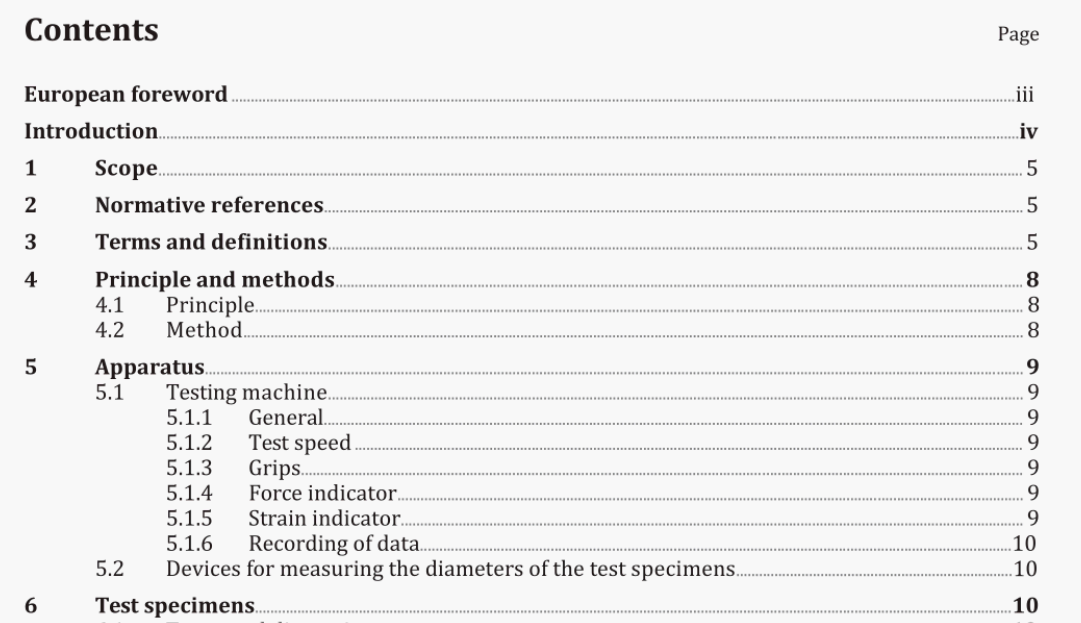BS EN 17129:2018 pdf download.Continuous-fibre-reinforced plastic composites – Pultruded unidirectional rods – Determination of tensile properties in parallel to the fibre direction
4 Principle and methods
4.1 Principle
The test specimen is extended along its major longitudinal axis at constant speed until the specimen fractures or until the stress (load) or the strain (elongation) reaches some predetermined value. During this procedure the load sustained by the specimen and the elongation are measured.
4.2 Method
4.2.1 The use of conventional grips for testing unidirectional pultruded rods having high axial tensile strength and low transverse compressive strength can cause crushing of the rod, thereby causing premature failure, due to the high compressive forces exerted by the grips. Steel tabs, the design of which is adapted to the shape of the rod, reduce the compressive forces exerted on the rod and overcome this negative influence of conventional grips. NOTE Conventional metallic tabs offer a high performance level and have been found satisfactory for testing rods. However, some limitations such as testing at low or high temperature have led to use alternative test fixtures. Alternative test fixtures may be used provided that the radial compression on the rods prevents any slippage of the specimens relatively to the fixture during testing and that the failures occur outside of the gripping areas. As testing rods of larger diameter, than the standard 6 mm diameter rod, has some limitations (e.g. testing machines of high capacity required, high load transfer into specimens) smaller specimens and alternative fixtures may be used provided that the general requirements of this document are fulfilled. Informative Annex A describes an alternative test fixture, which may be used for testing specimens without end-tabs.
5.1.3 Grips
Grips for holding the test specimen shall be attached to the machine so that the major axis of the test specimen coincides with the direction of the force. NOTE For the pre-stress, which might be necessary to obtain correct alignment and specimen seating and to avoid a toe region at the start of the stress/strain diagram, see 9.4. The test specimen shall be held such that slip relative to the gripping jaws is prevented when loaded to failure. The gripping system shall not cause premature fracture at the jaws or squashing of the specimen in the grips. For the determination of the modulus, it is essential that the strain rate is constant and does not change, for example, due to motion in the grips. This is important especially if wedge action grips are used. It is essential that grip length in contact with tab should be as long as tab length (see Clause 6). Hydraulic grips which can be set at a constant grip pressure are preferred.
BS EN 17129:2018 pdf download
